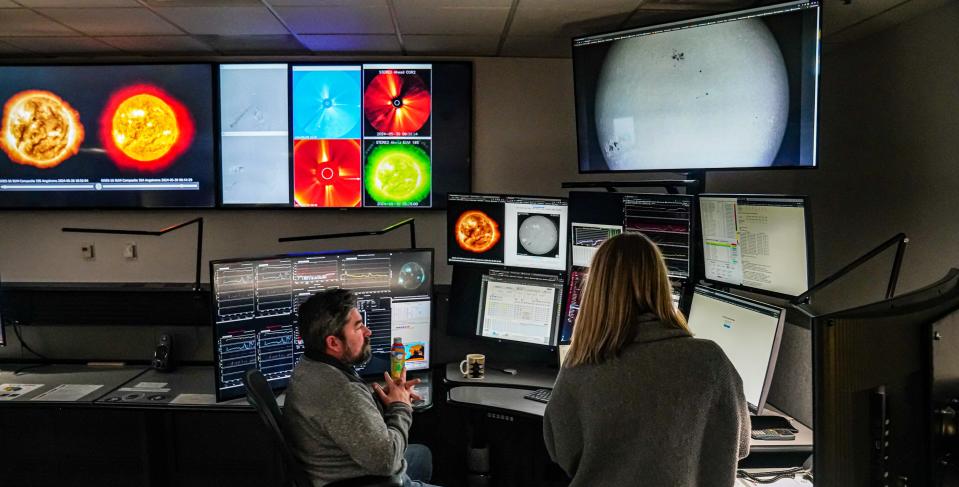A big northern lights show above the US? Maybe. Forecasters keeping an eye on early June.
- Oops!Something went wrong.Please try again later.
BOULDER, COLORADO – Space weather forecasters say there could be another dazzling display of the northern lights over parts of the U.S. next week — although it's too early to know for sure.
Forecasters gave stargazers in northern and upper Midwestern states hope for a show in the sky on Friday night into Saturday morning, but widespread sightings didn't materialize.
Now forecasters have their eye on a cluster of sunspots responsible for the spectacular nationwide May 10 aurora display, which rotated back in view of the Earth. That potentially sets up conditions for another spectacle, the federal Space Weather Prediction Center in Boulder, Colorado, said. Very simply put, those sunspots fire up the solar storms that could trigger auroras here on Earth.
But the uncertainty of the outlook — and the overnight disappointment — goes to show that aurora forecasts can be finicky. Top experts say it’s still a bit too early to confirm if next week's display will happen either.
Bigger northern lights show next week? It's too soon to know.
Next week sometime, a widespread aurora event might be possible, forecasters said. It all will depend on whether or not the sun belches out a solar flare and/or coronal mass ejection toward the Earth, which would trigger the geomagnetic storms and thus the aurora.
Shawn Dahl, a senior forecaster for the SWPC, said although the sunspot group known as Region 3697 has now rotated back to face Earth, it's too early to say whether it will send out another coronal mass ejection.
"We're forecasting stuff from 93 million miles away, so it's very difficult. And our science is limited," Dahl said. "We can do a great job of predicting the probability that the flare will happen, and if so, what level if might get to, and the same with radiation storms, but we have no way of knowing that a flare is imminent. That science doesn't exist. And we also don't have the science to know when a CME is going to explode off the sun. We have to wait for them to happen."
Skywatchers have their fingers crossed
Eager skywatchers have their fingers crossed, because June 6 is a new moon, meaning the skies will be extra dark and any aurora that does show up will be extra vibrant. Dahl, an amateur astronomer and night sky photographer who missed the May 10th display because he was working, said he's hopeful for a new display caused by the sunspots.

"We have no way of knowing whether it may produce a CME again, but flare probabilities are still high with this region," he said.
Why it's so hard to predict space weather
When exactly will the northern lights appear again? Conditions are primed for more aurora shows over the next few years, but experts say even the best predictions can only accurately be made a few days or even hours in advance.
Unlike with terrestrial weather, scientists who forecast space weather – which includes the aurora – must rely on observations of the sun, 93 million miles away, to make their predictions.
"There are so many uncertainties, it makes it difficult to predict," Bill Murtagh, the program coordinator at the Space Weather Prediction Center, told USA TODAY last year.
Hughes reported from Boulder, Colorado; Rice from Silver Spring, Maryland.
This article originally appeared on USA TODAY: Northern lights could appear in US again, but too soon to tell

